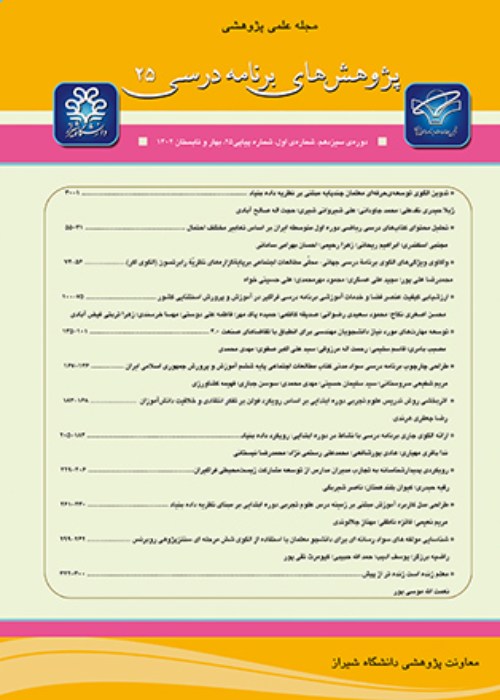Evaluating In-Service Training Programs Based on the Principles of Andragogy
Evaluation can have an important role in improving the quality of any training program. The aim of this study was to evaluate the effectiveness of applying the Hammond Model in in-service education programs based on the principles of Andragogy (2005).
How is the quality of the content in its different dimensions presented in In-Service Training Programs?
How well has been quality of the training environment, equipment and facilities in these programs?
How effective have been he teaching methods used by teacher trainers?
How effective has been the educational program presented in these programs in achieving the desired learning outcomes and goals?
Participants of this study were 120 teachers, 12 teacher trainers, and 21 course organizers and administrators.
One of the questionnaires, which was used in this study, was designed based on the Andragogical Process Model proposed by Knowles' (2005). The model involves the elements of preparation for learning, creation of an informal atmosphere, joint planning, participation in needs identification, participation in goal setting, creation of flexible learning design patterns, program implementation, self-assessment and joint evaluation. Furthermore, to obtain data on the quality of the presented content in its various dimensions, a 42-item questionnaire was used. Validity of this questionnaire was assessed and confirmed through seeking the perspectives of four faculty members who were specialist in Educational Evaluation, Curriculum Planning and Educational Psychology. Then, correlation analysis was run to assess reliability of the questionnaire. Cronbach's alpha value was found to be 0.89, suggesting a good internal consistency reliability for the whole scale. Additionally, Cronbach's alpha value was 0.83 for the first component, i.e. quality of content presented in its different dimensions it was 0.80 for the second component, (i.e. quality of training environment, equipment and facilities), and 0.79 for the third component, i.e. teachers' ability. The data were analyzed through using descriptive analysis.To evaluate the effectiveness of the curriculums presented in these programs, another questionnaire with 14 items and on a five-point Likert scale was used. Validity of the instrument was then assessed and confirmed through seeking the perspectives of four faculty members specialist in Educational Evaluation, Curriculum Planning, and Educational Psychology. Cronbach's alpha value was also 0.81, and thus reliability of the questionnaire was confirmed.
Based on the viewpoints of teachers, teacher trainers, and course organizers and administrators and as the results of this study indicated, the quality of contented presented in different dimensions was of amoderate level in these programs. Furthermore, from the viewpoints of teachers and teacher trainers, the quality of organization of the educational setting, equipment and facilities was moderate in these programs.
Teachers, teacher trainers, and course organizers and administrators also believed that trainers had a moderate ability level for making the courses effective. Finally, as participants of this study thought and considering the objectives and outcomes of the courses, the achievement level of the educational curriculums presented in these programs was moderate.
In-service training programs should be designed based on the characteristics of adult learning. Lack of problem-oriented curriculums, ignoring the interests and needs of learners, inconsistency between curriculum content and the allocated time, lack of attention to teachers' personal growth, and excessive attention to reach cognitive goals, and most importantly, ignoring the principles of Andragogy while designing an in-service training programs for teachers are among the reasons for why in-service training programs cannot achieved their desired goals and outcomes. Consequently, goal setting and specification of content, desired outcome and procedures for the evaluation of training programs can be enumerated as a number of factors which can guarantee success of any training program.
- حق عضویت دریافتی صرف حمایت از نشریات عضو و نگهداری، تکمیل و توسعه مگیران میشود.
- پرداخت حق اشتراک و دانلود مقالات اجازه بازنشر آن در سایر رسانههای چاپی و دیجیتال را به کاربر نمیدهد.



